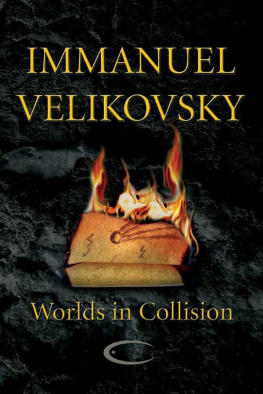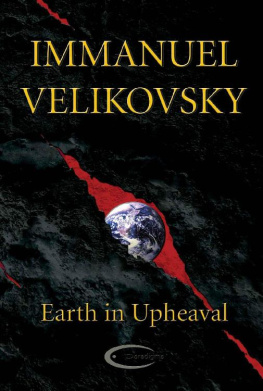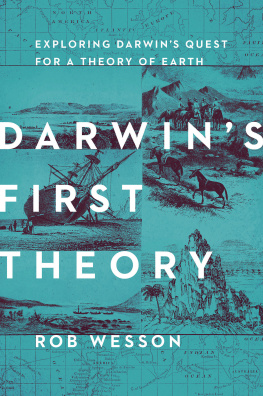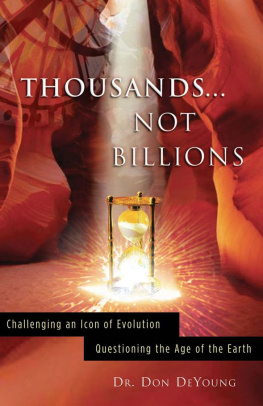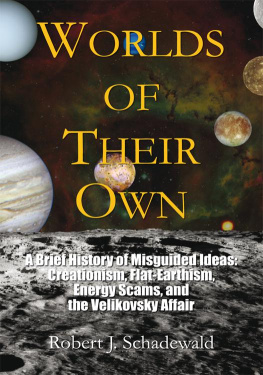
New, unchanged edition (2009).
Notes by the publisher are marked by { }.
Original edition (1950) by Doubleday & Company, Inc., Garden City, New York
Copyright by Shulamit V. Kogan and
Ruth V. Sharon
All rights reserved. No part of this book may be reproduced or transmitted in any form or by any means, electronic or mechanical, including photocopying, recording, or by any information storage and retrieval system, without permission in writing from the copyright owner, except by reviewers who may quote brief passages to be printed in a magazine or newspaper.
Published by | Paradigma Ltd. |
Internet: www.paradigma-publishing.com |
e-mail: |
ISBN: 978-1-906833-11-4 (printed edition)
978-1-906833-71-8 (ebook edition)
Contents
To Elisheva
Worlds in Collision is a special, an extraordinary book not only by its contents, but also by the response it has received.
It is one of the few scientific books of the past centuries that have a direct profound importance for humanity individuals and society alike. In fact it is a book that puts our present view of the world on a whole new fundament not in some abstract specialized disciplines remote from practical life, but in a broad range of areas like astronomy, cosmology, physics, geology, paleontology, biology, history, archaeology, literature, ethnology, theology, mythology, psychology; and in addition it has an important influence on the way man sees himself individually and socially.
It is the first time in centuries that a scientist didnt choose the direct way to his specialized colleagues in order to make the results of his research known, but addressed himself to the general public in a simple and clear language and presentation for which he was harshly punished by the scientific establishment.
It is exactly this reaction from representatives of the objective sciences that even match some medieval practices which shows that this book deeply shakes the foundations of our knowledge and belief.
Because of this book being so special, it has deeply penetrated the consciousness of many people. Others however have preferred to forget it or at least would like to do so. Due to this purposeful oblivion a younger generation doesnt even know about it any more, although today almost 60 years after its first publication it hasnt become less of a subject. On the contrary due to new results of scientific research and recent geological and climatic developments its importance has even increased. This, too, is something special in the flood of todays short-lived literary and scientific flash in the pans.
It is important for everyone of us and for science at large to deal with this book. Therefore we are happy to take upon ourselves the responsible task of making the complete works of Immanuel Velikovsky not just this book available to the public again in its unchanged form. Publishing this book and this unfortunately also is something special for non-fiction has required a fair amount of courage, which we proudly and consciously muster up.
Paradigma Ltd.
(to the paperback edition of Worlds in Collision)
First published in 1950, this book was left unchanged in all subsequent printings; nor have any textual changes been made in this paperbound edition. This was so by design: I wished to keep the text in its original form in order that, unaltered, it should face all subsequent discoveries in the fields it covers or touches upon. Should there have been changes, the reader of a new edition would be unable to judge to what extent a book, heretical in 1950, could measure up to later developments.
In 1950 it was generally assumed that the fundamentals of science were all known and that only details and decimals were left to fill in. In the same year, a cosmologist, certainly not of a conservative bent of mind, Fred Hoyle, wrote in the conclusion of his book The Nature of the Universe: Is it likely that any astonishing new developments are lying in wait for us? Is it possible that the cosmology of 500 years hence will extend as far beyond our present beliefs as our cosmology goes beyond that of Newton? And he continued: I doubt whether this will be so. I am prepared to believe that there will be many advances in the detailed understanding of matters that still baffle us.... But by and large I think that our present picture will turn out to bear an approximate resemblance to the cosmologies of the future, and he referred to the limitations of optical means in penetrating the depth of space.
The years that have passed since the publication of Worlds in Collision have seen the first great achievements in radio astronomy, the discoveries of the International Geophysical Year, and the dawn of the space age. The picture has changed completely. Signs of recent violence, disruption, and fragmentation have been observed on earth and elsewhere in the solar system: a submarine gigantic canyon that runs almost twice around the globe a sign of a global twist; a layer of ash of extraterrestrial origin underlying all oceans; paleomagnetic evidence that the magnetic poles were suddenly and repeatedly reversed and, it is claimed, the terrestrial axis with them; gases escaping from some craters on the moon, thought to be cold to its center; an exceedingly high surface heat of Venus. Furthermore, with the discovery of radio signals arriving from Jupiter, of the existence of a magnetosphere surrounding the earth, of the solar plasma, of the net charge on the sun, and of the magnetic field permeating the interplanetary space, decisive evidence has come up that the solar system, and the universe in general, are not electromagnetically sterile a basic change in the understanding of the universe, its nature, and the forces active in it.
The words found in the Preface to the 1950 edition, designating the work as heresy in realms where the names of Newton and Darwin reign supreme, should no longer evoke the same spontaneous rejection on the part of even the most conservative in science, unless it is a defense mechanism devised to protect an inner realization of incertitude.
What, to the scientist, constitutes a really satisfactory sort of success for a theory? The answer lies largely in the words generality, elegance, control, and prediction. As to generality, hardly anyone raised an objection. Possibly there was some elegance in the timing: when these words were written in 1960, ten years after the publication of my book and the great opposition it provoked, some of the most compelling data were radioed by the space vehicle, Pioneer V. I would like to relate here a few details about the control and prediction of two crucial tests, decisive for this book.
Early in my work I came to the understanding that Venus is a newcomer to the planetary family, that it had a stormy if only short history, and that it must still be very hot and giving off heat; further, that it must be surrounded by a very extensive envelope of hydrocarbon (petroleum) gases and dust. Such claims were in total disagreement with what was known in 1946 when I completed the manuscript of the work or in 1950 when it was published. To stress the crucial nature of these claims, they were put under the headings The Gases of Venus and The Thermal Balance of Venus immediately preceding the section, The End. Should I be right in these claims, the entire chain of deductions of which the identification of the extraterrestrial agent of the paroxysms described is but the final ring is strengthened. And since these crucial claims were in flagrant discord with accepted values, in case of confirmation they ought not to be denoted as lucky guesses.
Next page
